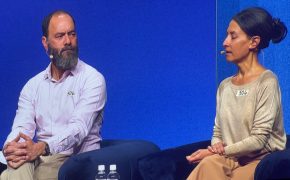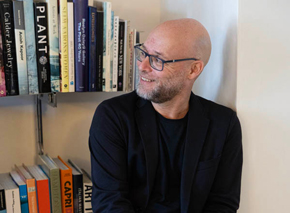Innovative AI tool helps scientists better understand cancer
Scientists from Tel Aviv University have written their own AI algorithm, enabling them to better understand how genetic diseases like cancer develop and respond to medicine.

Prof. Asaf Madi, Prof. Roded Sharan & PhD student Ron Sheinin. Credit Tel Aviv University
The innovative tool, named ‘scNET’ combines a vast amount of data collected from a human bodily sample to give scientists insight into how cells within certain genes interact and behave.
From there, they can see biological patterns and predict disease development.
As well as formulating information on how illnesses can be activated, the tool also helps scientists better grasp how treatments work.
Professor Asaf Madi told TPS-IL: “In each cell, we have a unique set of genes that are activated and not activated. The combination of genes activated gives us the program of what that cell is doing right now, and if it may go from dormant or not.”
He went on to say that by looking at how much a cell is secreting something known as “cytoxicic activity”, they can see whether or not there may be cells becoming active in trying to combat cancer in other parts of the body.
He explained technology previously did not give them a clear and comprehensive enough overview to determine such information, but the AI tool will help dramatically.
He said: “We previously saw cancer tumours in mice reducing but we didn’t always know why. Now we have a better understanding. It can help scientists that are researching advance [knowledge on] not only tumours but data [on genetic conditions and diseases] in general.”
When used, the AI tool collates a vast amount of data from the body, including that of protein-on-protein interaction, as well as cell and gene data.
The combination of information has not previously been collated before, making the tool the first to do so.
App developer Ron Sheinin said: “scNET integrates single-cell sequencing data with networks that describe possible gene interactions, much like a social network, providing a map of how different genes might influence and interact with each other.
“[It] enables more accurate identification of existing cell populations in the sample. Thus, it is possible to investigate the common behavior of genes under different conditions and to expose the complex mechanisms that characterize the healthy state or response to treatments.”
Professor Roded Sharan commented: “This is an excellent example of how artificial intelligence tools can help decipher biological and medical data, allowing us to gain new and significant insights.
“The idea is to provide biomedical researchers with computational tools that will aid in understanding how the body’s cells function, thereby identifying new ways to improve our health.”







